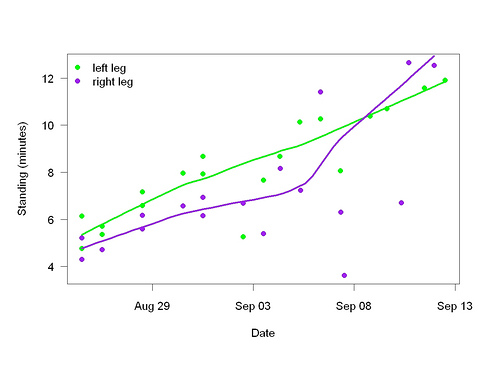Two more people have gotten results similar to mine. From a comment on an earlier post:
I’ve been doing these exercises – standing on one leg – and it’s helped my sleep immensely. About a year ago, I went through a pretty traumatic experience that disrupted my sleep patterns. The end result was that I couldn’t sleep for longer than 3 or 4 hours at night without waking up. For several months, the lack of sleep was like living in a nightmare, and prescription drugs just made the problem worse. I finally decided to go off medication all together and change my attitude, which worked wonders – I could get back to sleep after I woke up – but I’d still only sleep in 4 hour chunks.
About a month ago, I began doing these exercises, and now I’m sleeping 6 to 7 hours at a time. It’s amazing; and on the days I don’t do them, I don’t sleep well at all.
It’s amazing how easy they are to do – if I find myself standing in line, meeting friends for a happy hour, or even watching tv, I’ll do them.
Last night I told a friend to do them while he was at a happy hour, and this morning, he said he slept “like a log.”
As Pale Fire says:
If on some nameless island Captain Schmidt
Sees a new animal and captures it,
And if, a little later, Captain Smith
Brings back a skin, that island is no myth.
I have started to measure my sleep with a SleepTracker so I will have another way to measure the effects, in addition to (a) how rested I feel when I awake and (b) how long I sleep.
More The SleepTracker — my second, the first didn’t work — worked correctly for the first three nights but failed on the fourth.
